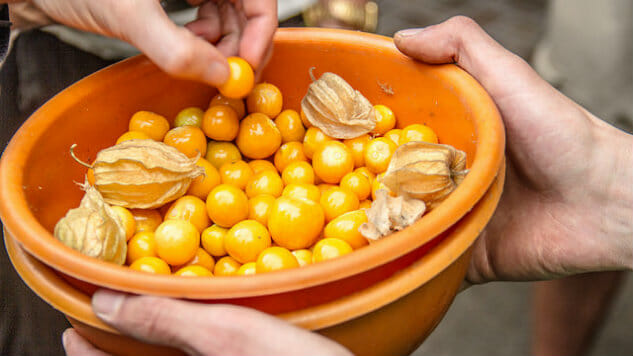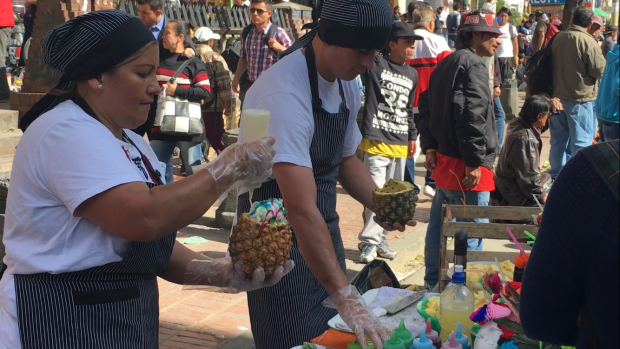Arepas, Avocados and Uchuva: Learning About Colombian Cuisine

I arrived to Colombia after spending five weeks in Belize, during which I largely subsisted on red beans. While I love red beans and appreciate their ability to keep me energized and alive in the Central American jungle, I was looking forward to the diversity of food I knew existed in Colombia, and learning about the unique culinary customs of the country.
My interest in visiting Colombia was born as a teenager after reading the Colombian author Gabriel Garcia Marquez’s Love In The Time Of Cholera, rumored to be set in the coastal colonial city of Cartagena. The book spends more time on intricacies of the heart than on the stomach, but even I knew that the South American country called to both.
Colombia country shares a border with Panama, has coasts on the Pacific Ocean and the Caribbean Sea, and lays claim to a huge portion of the Amazon jungle. It’s the most biodiverse country on the planet, with highlands and lowlands and sealands and junglelands characterized by entirely unique collections of animal and plant species.
So it’s no surprise that the various regions of the country independently developed their own take on Colombia’s cuisine, using the available flora and fauna to create delicacies endemic to their respective locations. Colombia has also seen a wide range of cultural diversity throughout the nation’s history, from the original indigenous groups to Arab traders to the Spanish invaders that ultimately shaped their modern culture.
Even though I expected a level of culinary diversity unlike anything I had ever seen before, food from the United States included, I encountered so much more than I could have imagined. I was graciously hosted for two weeks by actual Colombians, I their complete student to the culture and food, and they assured me that what I was fed is what actual Colombians eat, prepared how they eat it.

Photo by Ali Wunderman
The standard ingredients and individual menu items became obvious right away. What I noticed first was the ubiquity of arepas, little cornmeal cakes infused with cheese that can be eaten as sides or entirely on their own. At one restaurant in a little country town outside Bogota called Guatavita, arepas were served with salsa, much in the way tortilla chips are served with salsa in the US’s version of Mexican cuisine. I ate them daily for breakfast, and while my hosts even taught me how to make them, they were a far cry from Colombians who grew up emulating their grandmothers’ cooking skills.
As a self-proclaimed lover of fruit, I was astonished at the abundance of fruits that I never knew existed before, like the granadilla with its slimy black seeds that made my mouth dry, and the uchuva, which, like the total gringa I am, I initially mistook for a tomato. It seemed like every morning my gracious hosts had another fruit with which to bewilder me, but I ate them all with a silent note to myself to try to find them at home in San Francisco.

